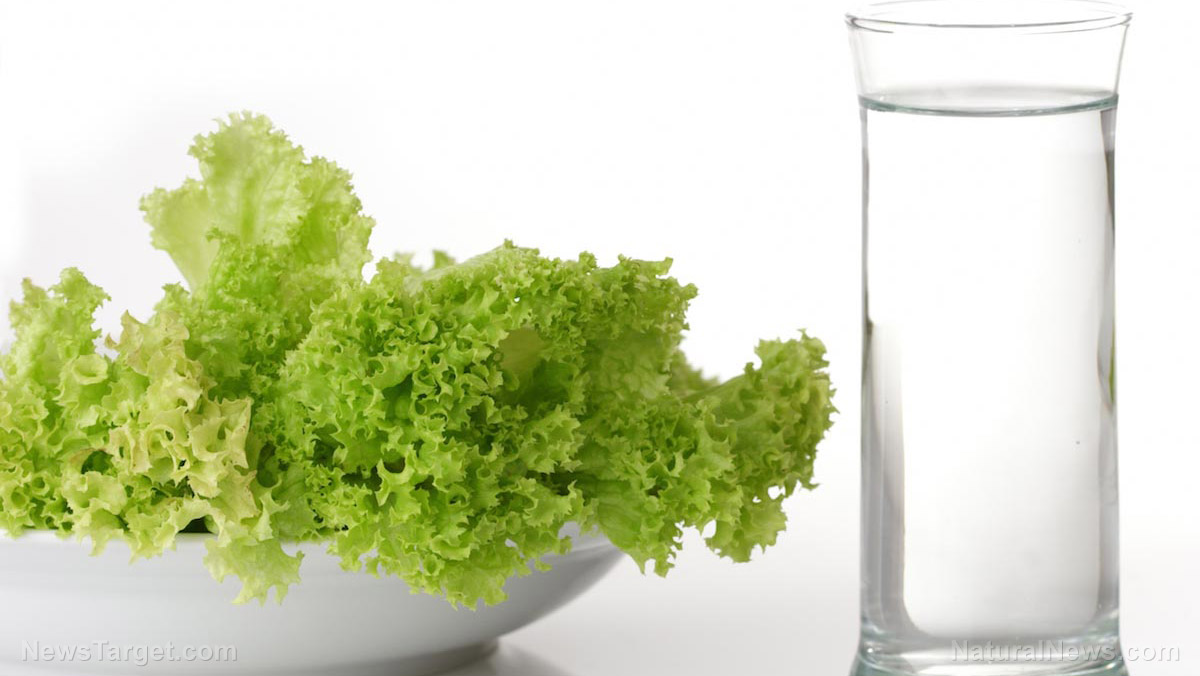Compression fractures and osteoporosis: Risk factors, symptoms and natural ways to prevent and treat injuries
04/13/2020 / By Divina Ramirez

Osteoporosis is a major public health threat for older adults. According to the International Osteoporosis Foundation, osteoporosis is estimated to affect 200 million women worldwide. In the U.S. alone, it affects 44 million adults aged 50 years and older.
There is currently no known cure for osteoporosis, but proper nutrition, regular exercise and certain weight-loss diets can alleviate its symptoms, as well as slow down degenerative bone loss.
What is osteoporosis?
Osteoporosis is a degenerative disease that causes bones to become brittle over time, thus significantly increasing the risk of fractures. Common markers of osteoporosis include low bone density, back pain, bad posture and loss of height over time.
Women are more at risk of osteoporosis since it occurs due to overwhelmingly low levels of estrogen after menopause. Although hormone fluctuation naturally occurs as part of the aging process, factors like poor dietary habits, eating disorders and micronutrient deficiencies also heighten the risk of osteoporosis.
It can also be difficult to diagnose prior to a fracture, as it is typically painless and tends to develop unnoticed. But once a fracture occurs, an individual might find it difficult to recover completely and reinforce brittle bones. Older adults who have late-stage osteoporosis tend to have bones that are so brittle that even the slightest pressure can cause a fracture.
Osteoporosis is the leading cause of compression fracture, a type of fracture that occurs along the spine. Low bone density tends to increase the risk of compression fractures, as it can cause segments of the spine to collapse. A compression fracture does not heal by itself, and, if left untreated, can damage nearby vertebrae, cause blood clots and affect mobility. In extreme cases, compression fractures can be an indicator of an underlying condition like liver disease and cancer. (Related: 25 Health conditions linked to bone loss and osteoporosis.)
Natural ways to prevent osteoporosis
The likelihood of osteoporosis largely depends on bone density. An individual who has low levels of micronutrients that support bone development, such as calcium and phosphorus, tend to have brittle bones. But an individual who has strong and sturdy bones is highly unlikely to develop osteoporosis over time.
Conventional treatment of osteoporosis complications includes pain medication, physical therapy, limitations on physical activity and modification of the living environment to prevent falls. But you can also build bones and prevent osteoporosis by observing the following:
Good nutrition
A balanced diet is key to optimal bone health. An adequate amount of fat, protein and micronutrients can prevent bone loss and fractures. For instance, a recent study by the University of Surrey in England found that micronutrients play a crucial role in peak bone mass attainment.
In particular, the study emphasized that an increased intake of calcium and phosphorus can significantly enhance bone density and lower the risk of osteoporosis. For one thing, calcium is an essential component of bones. As such, a balanced diet should include calcium-rich foods like cruciferous vegetables, leafy greens and seeds.
Likewise, phosphorus also builds bone mass and improves bone density. Foods that contain high levels of phosphorus include cocoa, legumes and shellfish.
Intermittent fasting
Intermittent fasting is an effective and natural way to prevent bone and joint diseases, such as osteoporosis and osteoarthritis. According to a recent article by natural health writer Robert Rister, intermittent fasting can prevent bone loss and improve insulin sensitivity.
Intermittent fasting is technically not a diet. As the name suggests, it is an eating pattern that cycles between periods of eating and abstinence. Obese individuals are at an increased risk of osteoporosis, so it is important to maintain a healthy weight. Intermittent fasting has also been shown to affect the parathyroid hormone, which plays an important role in calcium and phosphate metabolism and bone development.
Regular exercise
Like muscles, bones also develop as a result of regular exercise. Weight-bearing exercises that force the body to work against gravity, such as walking, jogging, tai chi, aerobics and yoga, encourage bone development and slow the progression of bone loss. Additionally, strength training exercises like pushups and squats can also build bone and muscle strength, thus lowering the risk of falls and fractures.
Osteoporosis can cause serious complications over time. Fortunately, good nutrition and lifestyle habits can build strong bones and prevent bone-related conditions.
Sources include:
Submit a correction >>
Tagged Under:
aging, aging secrets, alternative medicine, anti-aging, bone health, calcium intake, food cures, food is medicine, functional food, micronutrients, natural cures, natural medicine, nutrients, osteoporosis, pain relief, prevention, remedies
This article may contain statements that reflect the opinion of the author
RECENT NEWS & ARTICLES
Fasting.News is a fact-based public education website published by Fasting News Features, LLC.
All content copyright © 2018 by Fasting News Features, LLC.
Contact Us with Tips or Corrections
All trademarks, registered trademarks and servicemarks mentioned on this site are the property of their respective owners.





















